Gorilla Doctors Remove Rope Snare from Infant Ingamiya’s Wrist
By Gorilla Doctors Staff on Monday, April 14th, 2014 in Blog.Drs. Jean Felix and Noel, along with RDB Veterinary Warden Elisabeth Nyirakaragire, recently conducted an intervention to remove a rope snare from Ingamiya, the 18-month old mountain gorilla infant of mother Tegereza in Ntambara group. With support from Fossey Fund trackers, the field team completed the successful intervention on April 9. Below is Dr. Jean Felix’s report.
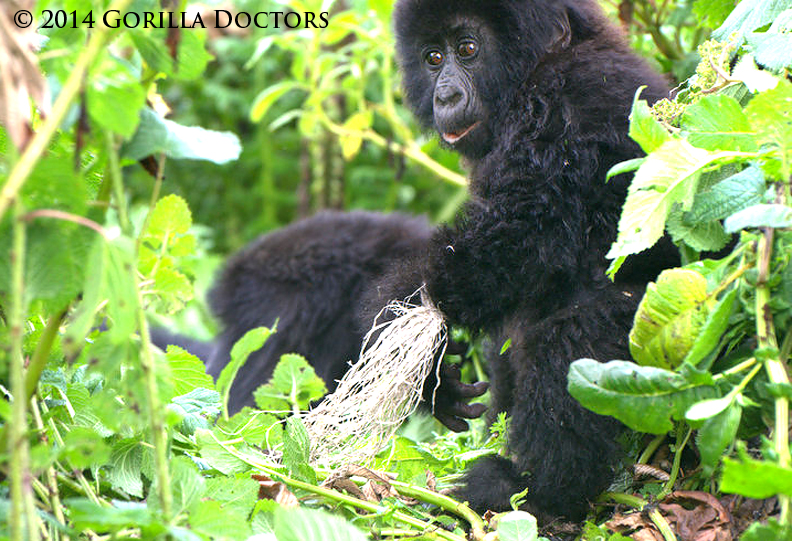 Infant Ingamiya with a rope snare around the left wrist.
Infant Ingamiya with a rope snare around the left wrist.
“Ntambara group was ranging in the Maporomoko area of Volcanoes National Park at 3,088 meters altitude when we located the group and performed the veterinary intervention. Both mother and infant were darted with anesthesia in order to remove the snare safely. Filmmaker Mike Boland, who is working on a documentary for CBC’s The Nature of Things (to air this fall), documented the intervention.
Our visit to the group also included a veterinary assessment of Nahimana’s infant, who was reportedly crying and recovering from respiratory illness. Upon observation, it was clear that the infant was not breathing well, and had foam around the mouth with hyper salivation. After 30 minutes of observation, the infant seemed to calm down, settling into his mother’s arms. Fossey Fund trackers, who regularly monitor Ntambara group, will continue to monitor the infant for any changes or worsening in symptoms.
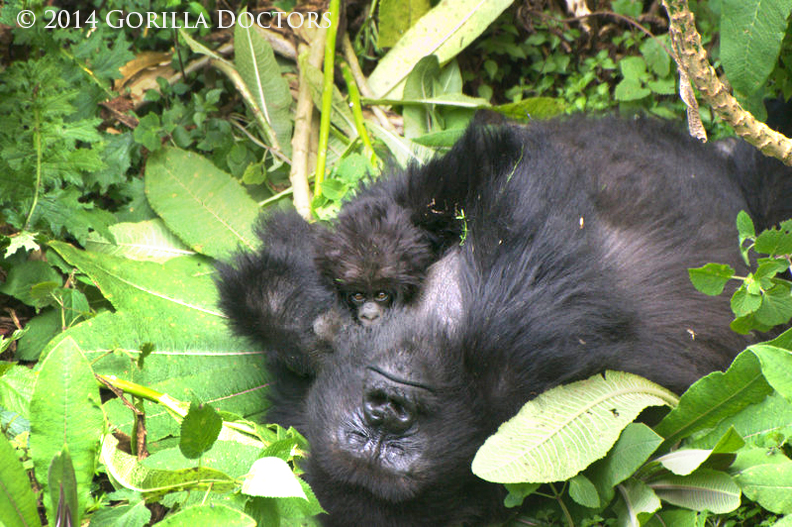 Nahimana and her infant, who was showing signs of respiratory illness during the observation.
Nahimana and her infant, who was showing signs of respiratory illness during the observation.
Once the assessments of Ingamiya and Nahimana’s infant were complete, we prepared for the intervention. We made the decision to dart Ingamiya’s mother Tegereza with anesthesia as well for everyone’s safety. We waited for several hours for a good opportunity to dart her, and successful administered the anesthesia when she moved away from the group and up a ravine. Ingamiya was using his left hand normally, despite the rope snare around the wrist. He was traveling on the back of his mother and suckling normally. Although he was not observed feeding, we watched him put leaves in his mouth, chew a bit and then remove them as if he was playing. He was observed biting at the rope some, but was clearly unable to remove it by himself.
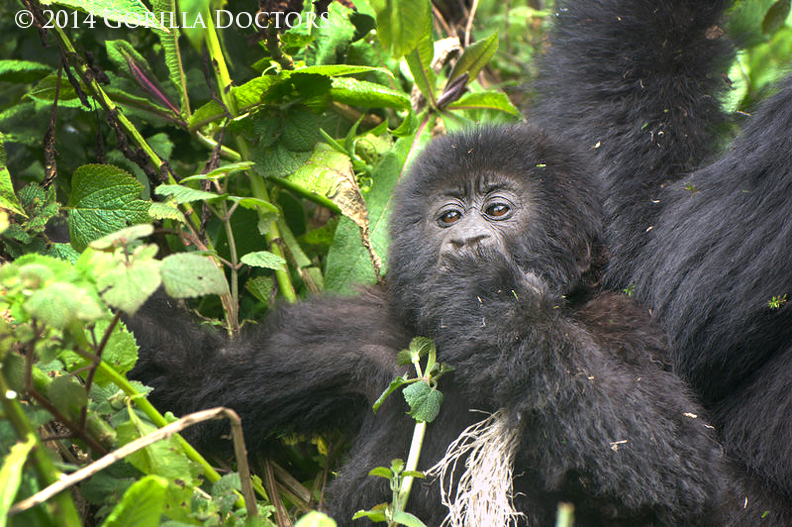 Infant Ingamiya biting at the rope snare.
Infant Ingamiya biting at the rope snare.
At 12:15pm, Tegereza received the full dose of anesthesia. With Ingamiya on her back, Tegereza moved about 15 meters away from the field team after the dart made impact. She then stopped and put Ingamiya down; we noticed the first effects of the anesthesia after 4 minutes and she was fully sedated at 12:25pm.
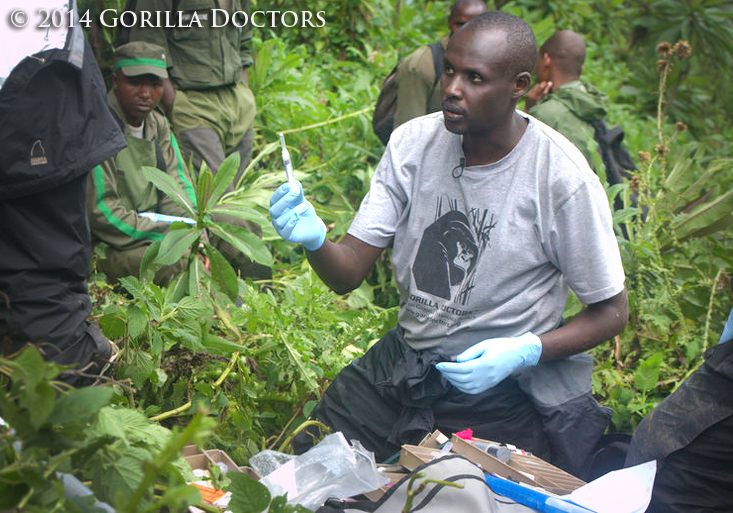 Head Rwanda Field Vet Dr. Jean Felix Kinani prepping supplies for the intervention.
Head Rwanda Field Vet Dr. Jean Felix Kinani prepping supplies for the intervention.
Using a syringe, I administered .35 ml of Ketamine to sedate Ingamiya for the intervention. Within 3 minutes, he was fully sedated and we were able to collect throat, nasal and blood samples and remove the snare. The silverbacks of the group, notably 3rd ranking silverback Twibuke, charged us frequently during the intervention but the Fossey Fund trackers did a great job of keeping them away from us while we worked.
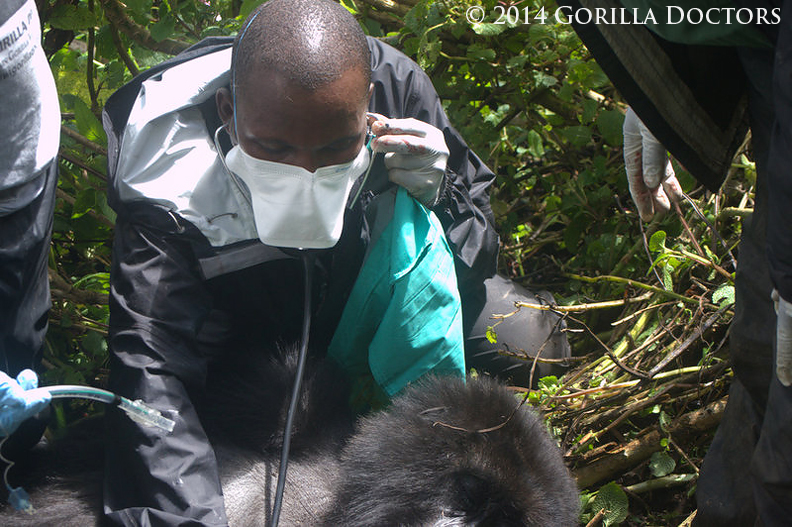 Dr. Noel listens to mother Tegereza’s heart while she is under anesthesia.
Dr. Noel listens to mother Tegereza’s heart while she is under anesthesia.
Ingamiya and Tegereza both woke from the anesthesia at the same time, and comfortably laid together while they recovered. Tegereza watched us for 40 minutes, listening to the silverbacks screaming, but we wanted to stay close by until they were fully recovered and able to move on their own.
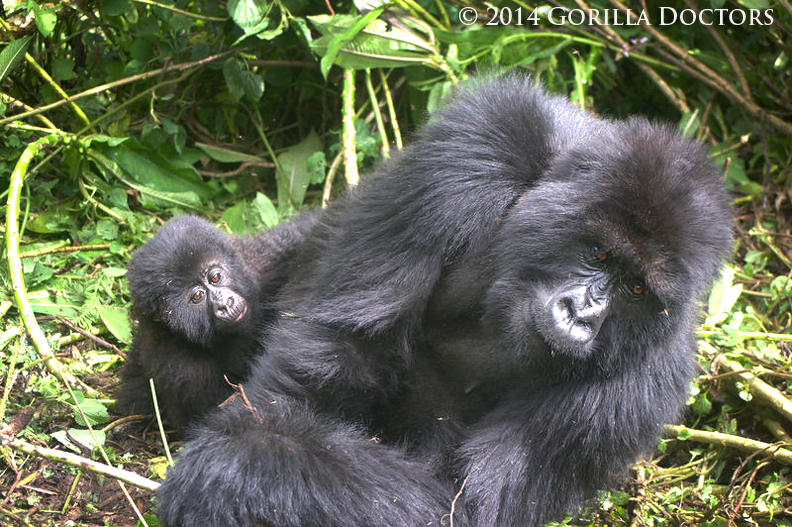 Tegereza and her infant Ingamiya of Ntambara group.
Tegereza and her infant Ingamiya of Ntambara group.
Once we moved away, lead silverback Ntambara joined the mother and infant with Kurinda and Twibuke, who hit Tegereza once. The three gorillas surrounded her and after 2 minutes, they settled down and began to feed. We continued to monitor the group for 30 minutes, then packed up our supplies and headed back down the mountain to process the samples at the Gorilla Doctors headquarters in Musanze. Trackers will continue to monitor the group to ensure a full recovery from the incident.”


 Donate
Donate
